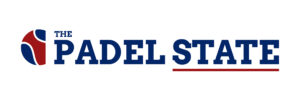With so much media attention (yes, including from us) focused on all of the sleek, modern new padel clubs going up in cosmopolitan enclaves like Manhattan, Brooklyn, and San Francisco, the last place you might expect to find a thriving community of rabid padel enthusiasts would be in a sparsely populated neighborhood of Columbia, SC, on the dilapidated campus of a private school that closed years ago.
Yet thanks to the vision, hard work, and perseverance of one man, the financial backing of a few “investors” (who never expected any financial return), and a steadily growing contingent of players, a grassroots, one-court club in Columbia is demonstrating the true power of padel to foster community, camaraderie, and sheer joy — no matter where it’s played.

The Man, the Myth, the Legend(ary Decision)
I first met Harry Miley two hours south of Columbia at a private squash club in Charleston, SC, shortly after moving there full-time in 2014. It was immediately clear he was a one-of-a-kind character, but what really struck me about Harry right off the bat was his willingness to regularly drive four hours round-trip several times per week just to play hardball-doubles squash. That’s just how much he loved the game he’d played for so much of his life.
What I didn’t realize at the time was that Harry didn’t just want to play squash, but also preserve and promote it in his home town, so that future generations could enjoy the sport every bit as much as he had over the years.
As the CFO of one of South Carolina’s largest school districts, Harry became aware of a former private school, once known as the Sloan School, whose sizable campus was up for sale after closing and falling into utter disrepair. He recalls, “I met a guy who graduated in 2012 (the school’s last year in operation) and I asked him how many were in his graduating class? He said he was it.”
With no squash courts to speak of anywhere nearby after the University of South Carolina decided to repurpose their four courts some years prior, Harry got a seemingly harebrained idea.
He says, “The property was overpriced, but it was 3.5 acres and included a gym, with no pillars and high ceilings, which was perfect for squash courts. The gym was about the only building that was worth buying. The others had been looted and vandalized and had lots of water damage. But they would only sell it as a whole.
So I made an insulting offer and they countered with a price that was reasonable enough that I felt I just had to buy it. I’m not wealthy and it was not a financially smart decision. But I felt that it was the best chance for us to develop a club.”

It Takes a Village
Harry closed on the property in 2015 and along with a small handful of other squash enthusiasts began looking into how to best go about building a singles squash court.
“We looked into several professional court-building companies. As a member of the Charleston Squash Club (CSC), I was pretty familiar with the cost of courts. But we really didn’t have the deep pockets among our members to go that route, so we started looking at other options,” Harry reports.
“One of our members got frustrated with our slow progress and hired two carpenters to build the court. Several of us paid most of the bills, but he oversaw the construction. Richard Millman, the former squash pro at CSC, saw a Facebook post about the court construction and told us that he had a glass back wall that he would donate to the effort.
We finished the court in early June 2015 and the ‘club’ launched with six to eight players and a small group of financial contributors.”
Before long, Harry’s passion project began attracting more interest and players. Eventually a badminton court was added so that those waiting to play on the squash court would have something fun and athletic to do before or in between games of squash. And by 2019, after many struggles with permitting, both men and women’s locker rooms were opened. Then things got interesting…
Hindsight is 2020
Like everything else in the world, March 2020 threw a big wrench in Harry’s plans for the future of the club. While he had been hoping to add a hardball doubles squash court next to the singles court, he instead ended up throwing together a make-shift pickleball court, which was an instant hit.
Harry recalls, “Pickleball was really starting to take off during the pandemic — and we had plenty of room. So we taped down the lines and bought a $300 net that still looks like new three years later.”

With our squash club in Charleston closed due to COVID, I started making regular trips up to Columbia to play pickleball, purely because it was something to do. And to be honest, in the absence of squash, I actually really enjoyed it. But I also noticed that the arrival of pickleball created somewhat of a divide at Harry’s club.
There were many devout squash enthusiasts who refused to try it out, opting to instead focus on their rails and boasts. And conversely, the club attracted numerous pickleball addicts who wanted nothing to do with any game that didn’t involve dinking and a kitchen. Which all seemed a real shame to me at the time.
An Unusual Path to Becoming a Padel Pioneer
In 2021, just shy of his 72nd birthday, Harry tore his rotator cuff while playing doubles squash in a tournament at the Piedmont Driving Club in Atlanta, which effectively ended his almost 50-year squash career.
Resigned to the fact that he’d never be able to play doubles squash again and sensing he needed to do something to keep up the club’s momentum, he decided to add either another singles squash court or another pickleball court in the near future.
A few months later, a long-time squash friend of mine, who had recently moved to Philadelphia, invited me to come up and try out a “new” sport they had started playing called “padel” — and everything changed forever.
After playing just once, I immediately called Harry and said, “Before you commit to add another squash or pickleball court, come with me down to Florida and let me show you something…” Despite my sending him several choice YouTube videos of epic padel points, he was skeptical, but always being one who’s up for a racket-sports-related adventure, he quickly agreed.

A few weeks later, Harry and I and several other Charleston squash players stepped onto the padel court at Kinetic Indoor Racquet Club in Boynton Beach, Florida thanks to a connection with their director of squash, Peter Cheshire. Three games into his first-ever set, Harry turned to me with an ear-to-ear grin and said, “Yep. This is what we’re building!”
Less than nine months later, in mid-December 2022, the first — and currently only — padel court in South Carolina opened for play.



The True Power of Padel
With the one-year-anniversary of the court’s opening coming up, Harry reflects that whereas in the past many of his members only wanted to play squash or pickleball, but not both, everyone now wants to play padel all the time.
He says, “The club’s vibe has changed tremendously in a positive direction. More people have joined, more people are visiting, it has been wonderful. 100% of our members play some padel. About 3/4ths play just padel.
Pickleball is fine for a lot of people, but it’s not much of a workout for more serious tennis or squash players. And unless you started squash at a young age, it can be a hard sport to get into. But a lot more people have played tennis and want more of a challenge than pickleball. So padel is the perfect fit. And the doubles aspect of the game adds a wonderful social component as well.”
He notes that he has one member who had never set foot on a padel court before visiting his club, adding, “He came out and played once. He was back the next day with a check for an entire year’s dues, and has been on the court non-stop ever since. When he can’t get a game, he’ll just go out on the court by himself and practice his serve. And now he’s got his son playing regularly — and at a very high level. He’s going to be a stud!”
While building a padel court in a community where most people had never even heard of the game, let alone played it, certainly took a leap of faith and has come with its fair share of headaches — financial, logistical, and otherwise — Harry says there is simply no doubt about it, “This is the best decision I ever made.”
For information on how to play padel in Columbia (and dozens of other places around the country), please see our master list of everywhere you can play padel in the U.S. right now.
























